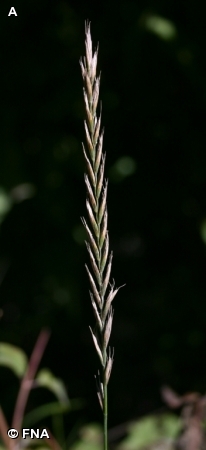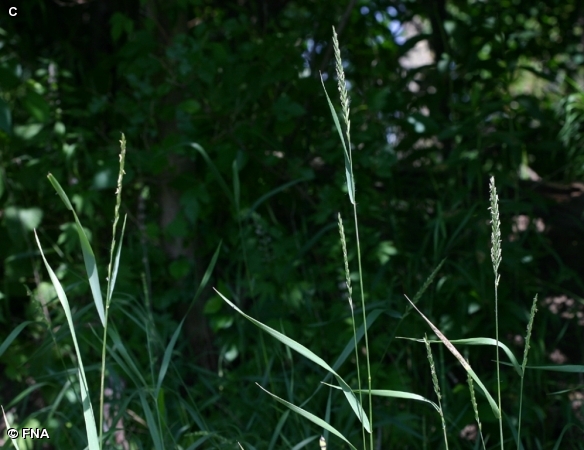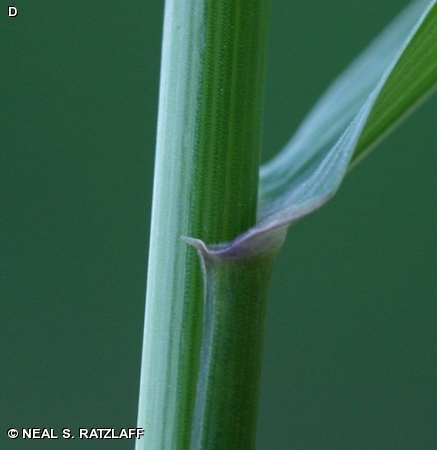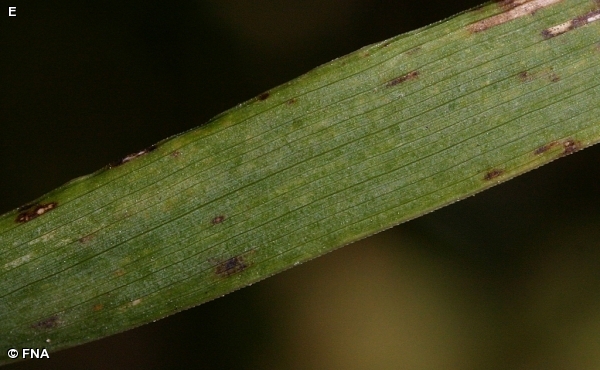
An introduced, strongly rhizomatous perennial, a native of Europe, with flowering stems up to 3 1/2 feet tall. Flat blades up to 1/2 inch wide and 12 inches long are not prominently ridged (E). They usually have prominent auricles at their bases (D). Flower heads are spikes with 2 rows of alternate, overlapping spikelets oriented along the long axis of the stem (A). Glumes and lemmas usually have short awns.
Moist areas including streambanks, pastures, gardens, lawns, ditches and cultivated fields. At Fontenelle Forest it is rare in the vegetation along the north side of the Wetlands Learning Center between it and Camp Gifford Road. At Neale Woods a single clump has been seen along the Missouri River bank near the Missouri River Ecology Trail bench. Flowering occurs from June to August..
Western Wheatgrass (Elymus smithii) has a similar spike, but leaves are prominently ridged and usually rolled up on the edges. Spikes of Tall Wheatgrass (Elymus elongatus) are open, with the spikelets widely separated.
Quackgrass is a good hay and forage plant, but its aggressive habit of invading moist grazing land and cultivated fields often makes it a serious management problem.
The content of NatureSearch is provided by dedicated volunteer Naturalists of Fontenelle Forest who strive to provide the most accurate information available. Contributors of the images retain their copyrights. The point of contact for this page is: Neal Ratzlaff.




